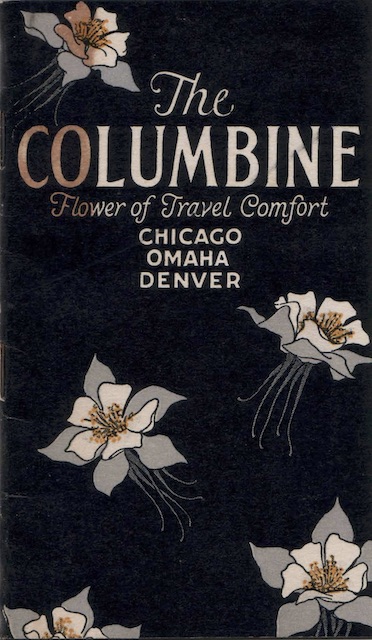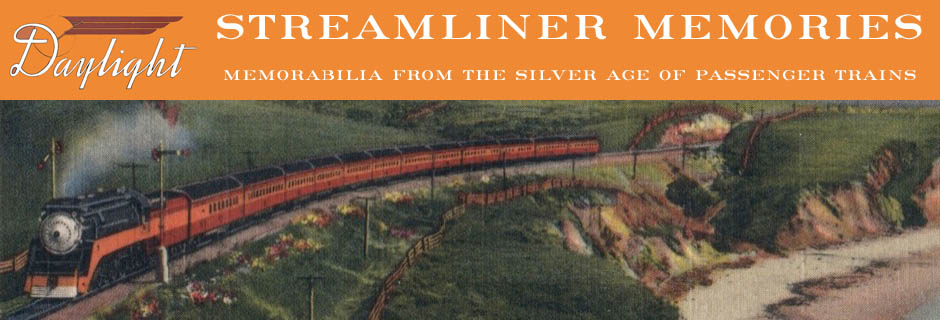Issued a year after the train was inaugurated, this 1928 booklet describes the amenities available on board this Chicago-Denver train. These include a “limousine observation car” staffed by a “Filipino attendant” who pressed garments, operated the buffet-soda fountain, and sold cigars, cigarettes, and playing cards. I’m not sure what made the car a “limousine,” but it had eight seats in a large-windowed observation room, 15 more seats in an observation lounge, seven seats in a men’s smoking room, four seats in a women’s lounge, plus a drawing room and compartment.
 Click image to download a 2.1-MB PDF of this 20-page booklet.
Click image to download a 2.1-MB PDF of this 20-page booklet.
UP later modified the “flower of travel comfort” slogan for the Portland Rose, which it called a “triumph of train comfort.” These trains no doubt were comfortable for sleeping car passengers; less so for occupants of “high-backed-seat coaches.”
This booklet also notes that UP-C&NW offered two other trains on the same route: the Colorado Express, which took two nights and a day, and the summer-only Denver Special, which like the Columbine took a little more than 24 hours. The former train had a “club-observation car” while the latter had an “observation buffet-lounge car,” distinctions that may have made sense to frequent rail travelers in 1928 but that are hard to understand now.
